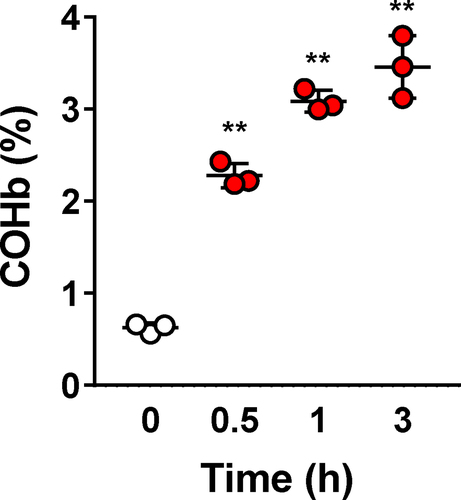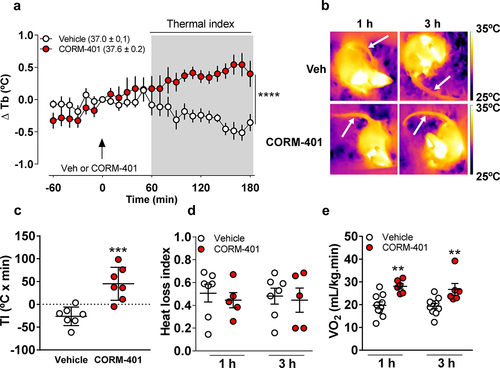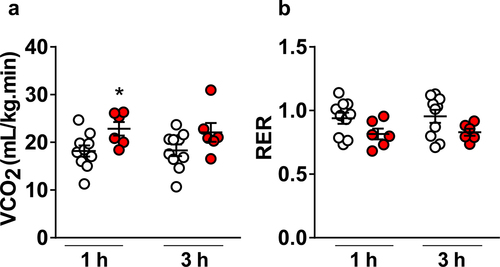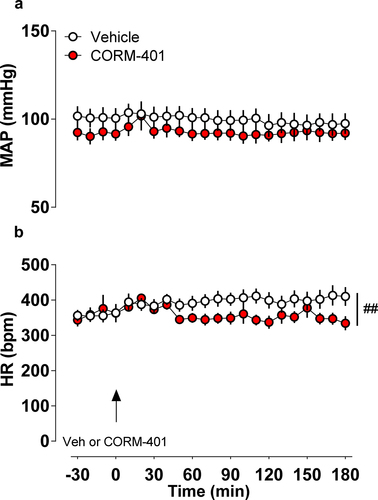Figures & data
Figure 1. Time course of blood carbon monoxy hemoglobin (COHb) levels after CORM-401 treatment. Rats (n = 3) were administered with 30 mg.kg−1 and blood collected at different time points to measure COHb levels by a spectrophotometric method. **p < 0.01 vs. time 0.

Figure 2. Time course of changes in deep body temperature (Δ Tb in °C) in response to vehicle or CORM-401 (panel a). Thermographic images of representative rats that received vehicle or CORM-401 at 1 h and 3 h (panel b). Arrows indicate the site of tail skin temperature assessment. Average and individual values of thermal indexes (TI, °C x min) from 60 to 180 min after vehicle or CORM-401 (panel c). Heat loss index of rats that received vehicle or CORM-401 (panel d). Oxygen consumption (VO2) of rats that received vehicle or CORM-401 (panel E). (n = 7–10 vehicle and n = 5–7 CORM-401 treated animals). **p < 0.01, ***p < 0,001, ****p < 0.0001.

Figure 3. Average and individual values of carbon dioxide production (VCO2) (panel A) and respiratory exchange ratio (RER) of rats that received vehicle or CORM-401 (panel B) (n = 10 vehicle and n = 6 CORM-401 treated animals). *p < 0.05.

Figure 4. Time course of mean arterial pressure (MAP in mmHg, panel a) and heart rate (HR in bpm, panel b) were continuously monitored throughout 180 min in rats (n = 8 vehicle and n = 5 CORM-401 treated animals) in response to vehicle or CORM-401 administration. ## p < 0.01 interaction between treatment and time.

